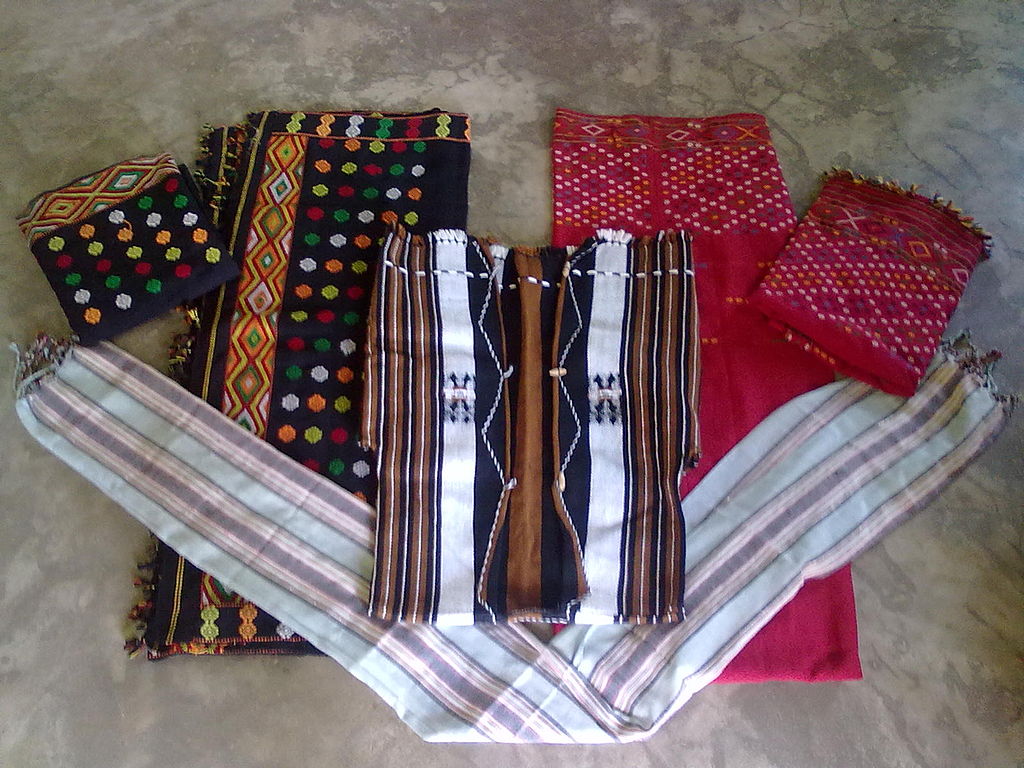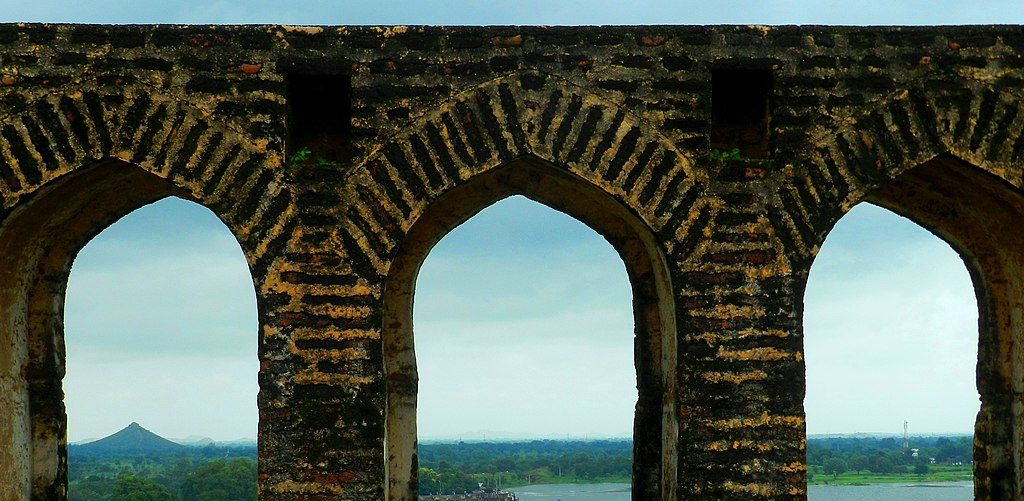
Located at the heart of India, Madhya Pradesh has had sheer importance for various dynasties throughout history. Culturally viewed, Madhya Pradesh has four zones, each with cultural and traditional identities. These are- Bundelkhand, Baghelkhand, Malwa, and Nirmar. From temples to fortresses to cave paintings to masjids to stupas, the state of Madhya Pradesh has never failed in showing its marvellous grandeur. One can find various architecture styles in Madhya Pradesh. Subsequently, the architectural styles vary from Islamic styles to European styles, including Indo-Islamic and Rajput techniques.
There are even some features unique to the state. Let’s have a look in detail.
Vernacular Architecture of Madhya Pradesh

Vernacular architecture refers to the indigenous, environment-oriented settlement architectural styles. This aspect reflects the brawn of tribal culture and folk traditions in the state. Madhya Pradesh is home to almost 46 Scheduled Tribes, with nearly one-fifth of its population categorized under the tribal people. Time and again, the tribes have remarkably represented the vernacular architecture of Madhya Pradesh in their textile and other creations.
The vernacular architecture of Madhya Pradesh includes tribal styles of making houses, pucca, semi-pucca, and kuchcha. The material used to construct homes includes mud, bamboo, and bricks. The linear patterns on mud walls, sloping roofs, and space (courtyard) are pretty common in the houses. ‘Bayara’ refers to the empty lot or area left in the homes.
Ancient architecture of Madhya Pradesh
Sanchi Stupa
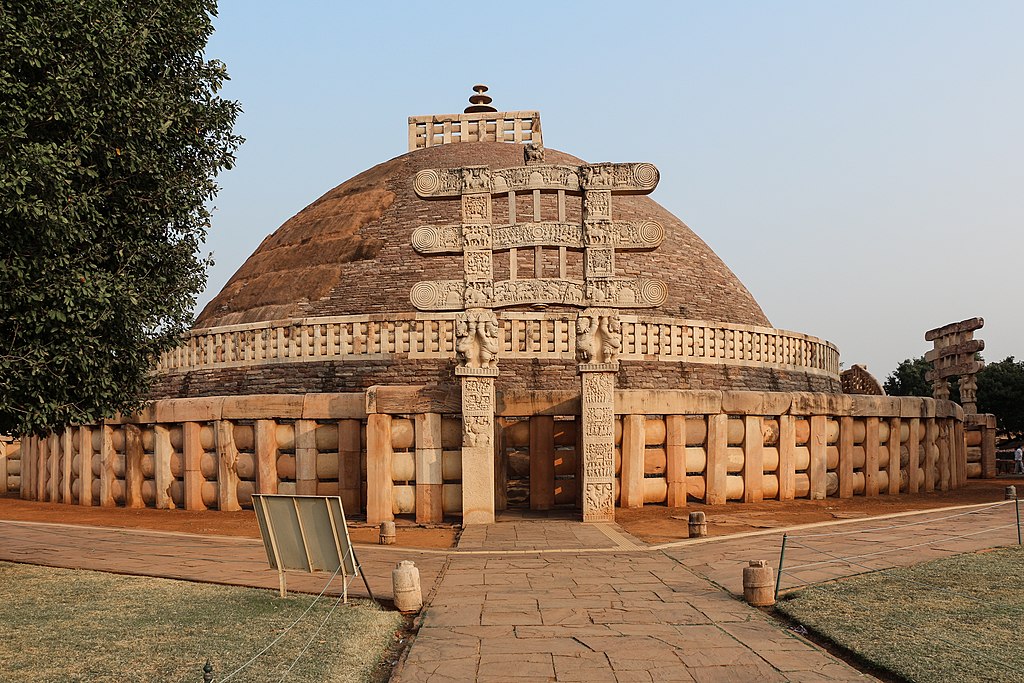
Sanchi Stupa, one of the oldest monuments established in the state, was constructed under the ruler Ashoka (265 to 238 BCE). In addition, it is one of the oldest Buddhist mounds built in India. Sanchi Stupa, a UNESCO World Heritage site, is located near the capital city of Bhopal. Sanchi Stupa is one of the largest stupas in India, with 54 feet X 120 feet dimensions.
The three chhatris, along with a large pillar at the centre, adorn the dome constructed over the relics of Lord Buddha. The ceremonial gates and the surrounding railing show scenes from Buddhist Jataka stories and Buddha’s life.
Khujraho Temples

Built by the Chandela kings during the 9th to the mid- 11th century, the Khajuraho group of temples is one of the greatest marvels in the state and the country. Representing the Nagara-style of architecture, the temples manifest expertise in sculptures chiselled on the temple walls. At the same time, following the Vastu-Purusha-Mandala design plan of the Hindu religion, the temples show excess use of sandstone. Besides this, the directional positioning of the Mandapa, Garbhagriya, and Antarala is also a noted feature.
The ancient texts suggest that the group included almost 85 temples in the 12th century. However, only 25 temples stand intact today. Facing destruction under Muslim rule from the 13th to 18th century, most temples witnessed great devastation and neglect until rediscovered by the British surveyor, T.S. Brunt, in the 1830s.
Gwalior Fort

Built-in the 6th century, the Gwalior Fort is the ‘pearl amongst fortresses in India. The striking feature of this fort lies in the digit zero (0) found in the architectural designs in the temples within the fort. Hathi Pul and Badalgarh Pul, the two gates of the fort, bag all the tourist attractions here. Today, the light shows and music performances act as a charm for the defence. The fort houses various palaces, out of which Man Mandir palace and Gujari Palace are the most popular ones. There are also various Buddhist and Jain temples within the fort.
Malwa Sultanate Architecture of Madhya Pradesh
Chaman Mahal
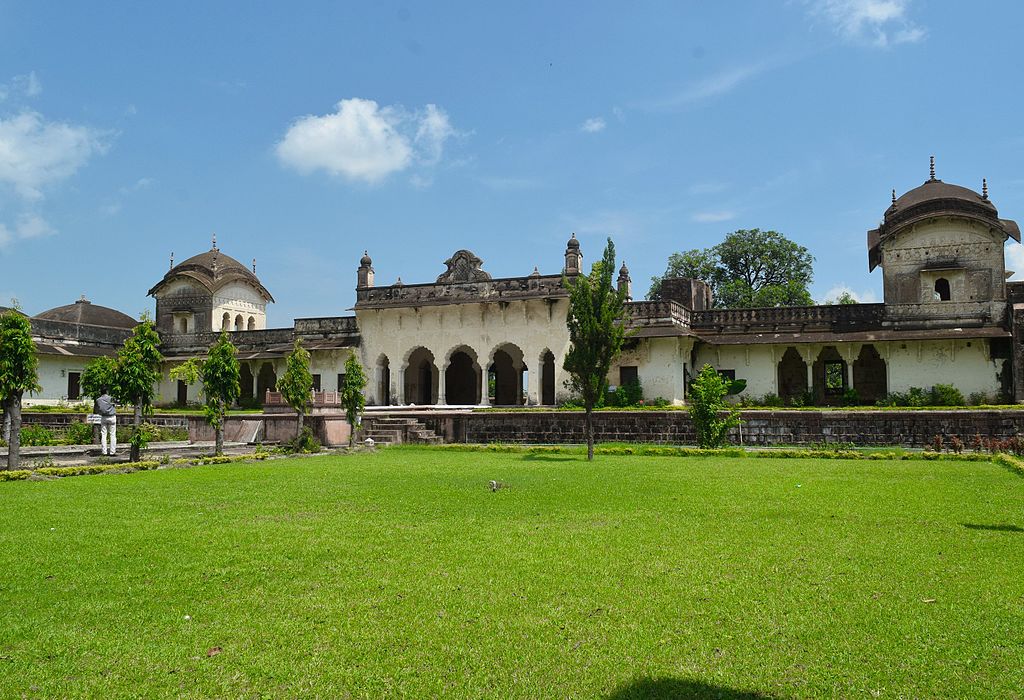
As the name suggests, the Garden Palace (Chaman Mahal)’s glory lies in its beautiful garden. The palace situated in Bhopal is a Mughal and Malwa-style architectural monument built with sandstone. In 1715, the ruler established this court for the Afghan commander Dost Mohammad Khan. Within the Chaman Mahal, the Sheesh Mahal has 12 entrance doors adorned with beautiful Bengali-influenced drooping eaves. The central park has marvellous and aesthetic fountains.
Jahaz Mahal of Mandu
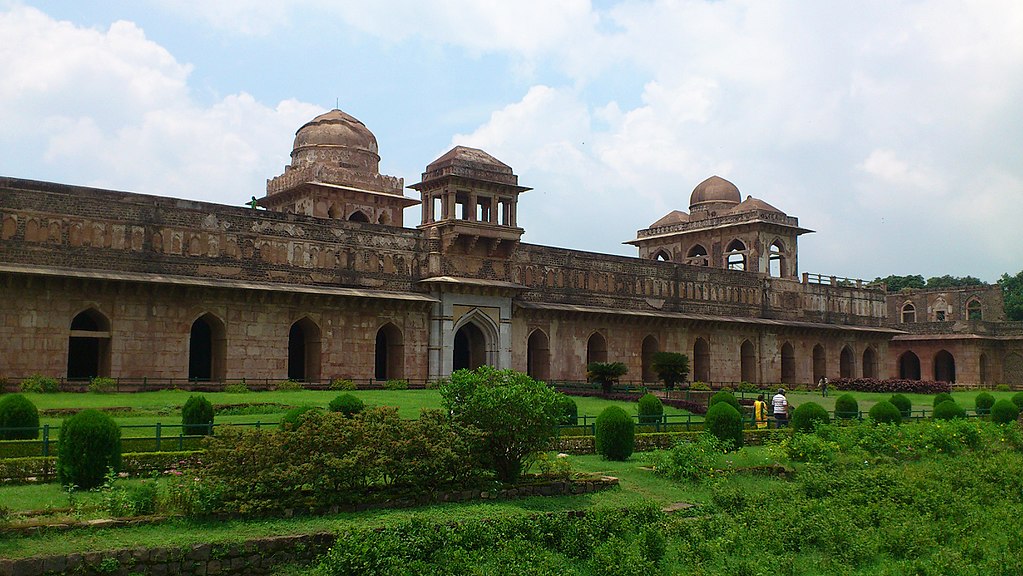
Sultan Ghiyas ud-Din-Khalji commissioned the construction of this palace. Treated as a harem, the mahal is a rectangular-shaped, two-storey structure. Between two artificial lakes, the palace’s location makes it appear floating on water, hence, living up to its name. English texts refer to the court as ‘Ship Palace’.
Mughal Architecture of Madhya Pradesh
Chanderi Fort
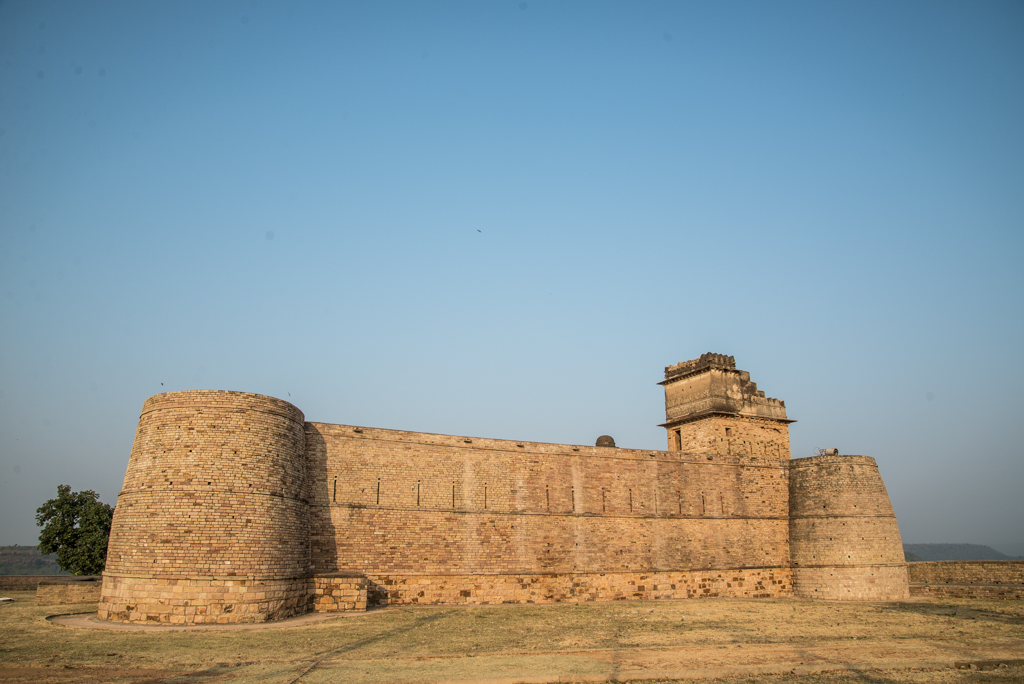
Located in the district of Ashokanagar, southwest of the Betwa River, The Chanderi fort is one of the best surviving Mughal forts in the state. Nonetheless, the Mughals only rebuilt the regiment. Built on a hill, the fortification walls surround and protect the fort. The glamour of the fort lies in its three gates. First, The Khooni Darwaza, the main entrance door, holds the history of sheer cruelty and violence. Called the ‘gate painted in blood’, Mughal nobles used the door to throw criminals in the chamber beneath. Second, Kati Ghati is a 59 meter long, 12 meters broad, and 24.6-meter-high gate adorned with sloping towers. The third and the highest gate of the fort is the Hawa Paur. Also, there is a masjid, carved with intrinsic mihrabs and verses from the Quran, built at the fort’s entrance.
Ashrafi Mahal
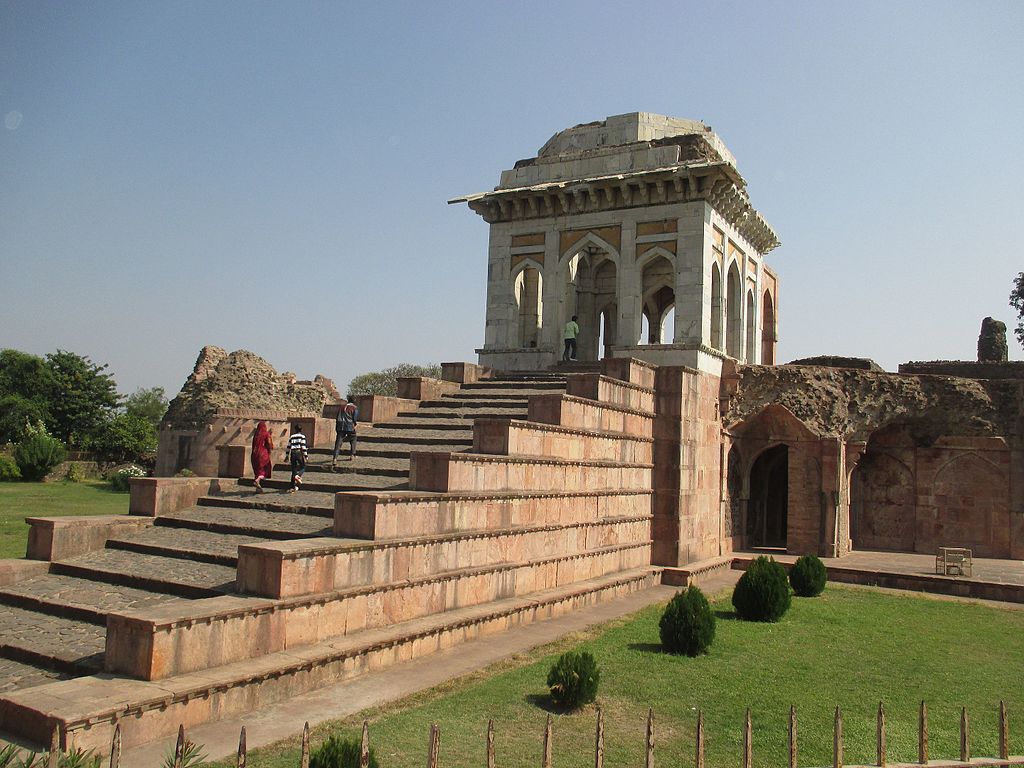
Built by Hoshang Shah between 1405 to 1422, the Ashrafi Mahal was an Islamic college (madrasa). However, later, Mahmud Khilji converted the fort’s northwest tower into a seven-storey victory tower. Built-in Redstone, the building is as high as 150 feet. The balconies of the mahal, constructed over a marble string course, show delineation of the stages.
Indo-Islamic architecture of Madhya Pradesh
Jahangir Mahal

The stone monument built by Bir Singh Deo in the 17th century is one of the most spectacular monuments of the Orchha. The main reason to make the palace was to welcome the Mughal emperor Jahangir to the town of Orchha. Built-in Mughal and Rajput architectural styles, the large three-storey castle has beautiful hanging balconies, delicate chattris and trellis, and a large fountain at the centre. The two elephant statues at the entrance get all the attention of the tourists.
Datia Mahal
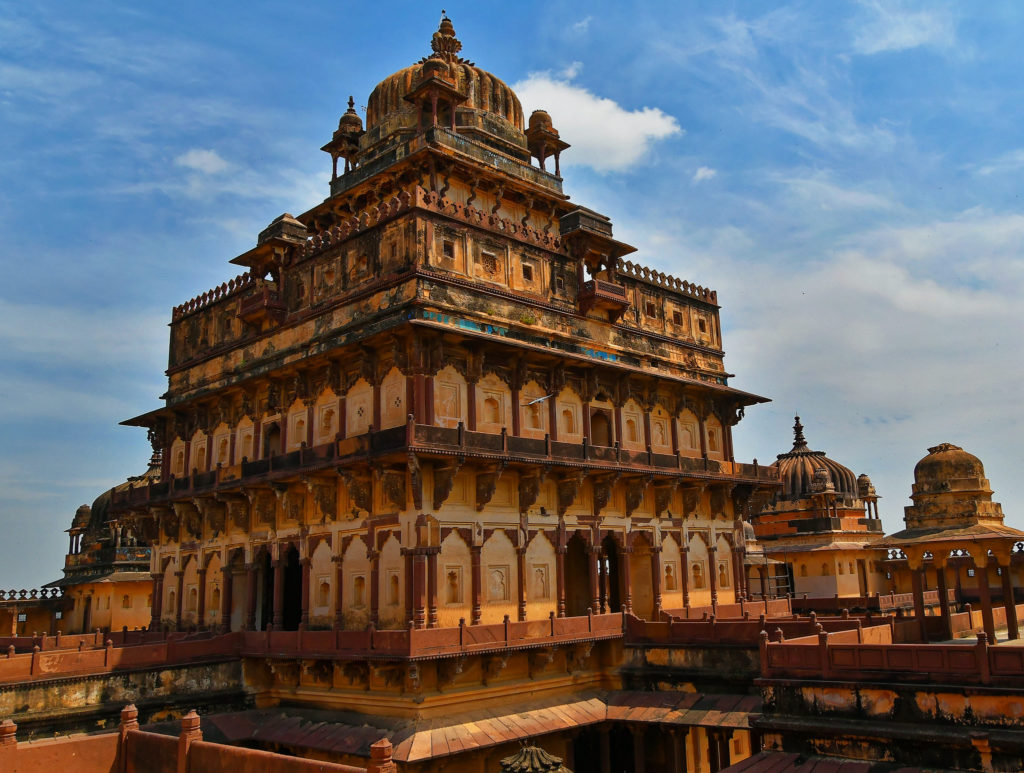
Built-in 1614, the Datia Mahal is one of the most exceptional Indo-Islamic architecture in India. With the multi-storeyed open chambers surrounding the central courtyard, the palace gives an aesthetic Rajput-style feel. The pillars and corridors depict ordinal designs. The embellished ceiling of the Persian carpets gives it as much Mughal architectural fells as well. The windows are unique, showing mashrabiya style, enclosed with latticed wood screens, engraved with beautiful motif designs.
Colonial architecture of Madhya Pradesh
Jai Vilas Palace of Gwalior
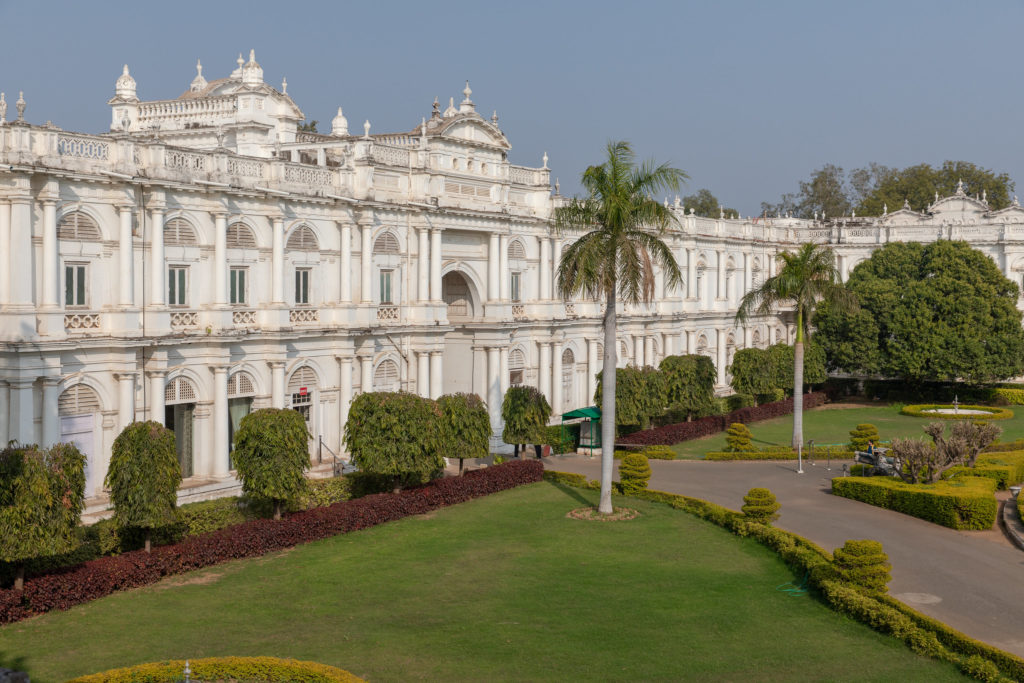
Sir Micheal Filose built this architectural marvel of the 19th century under the reign of Maharajadhiraja Shrimant Jayajirao Scindia. The palace shows a perfect blend of European architectural details. The first storey shows the Tuscan style, while the second storey of the court shows the Italian Doric style, and finally, the third storey depicts the detailed Corinthian architecture.
The Durban Hall, decorated with gilt and gold furnishing, topped with colossal royalist carpet and massive chandeliers, attracts the most attention. The chandelier is the heaviest in Asia.
Church of Pachmarhi
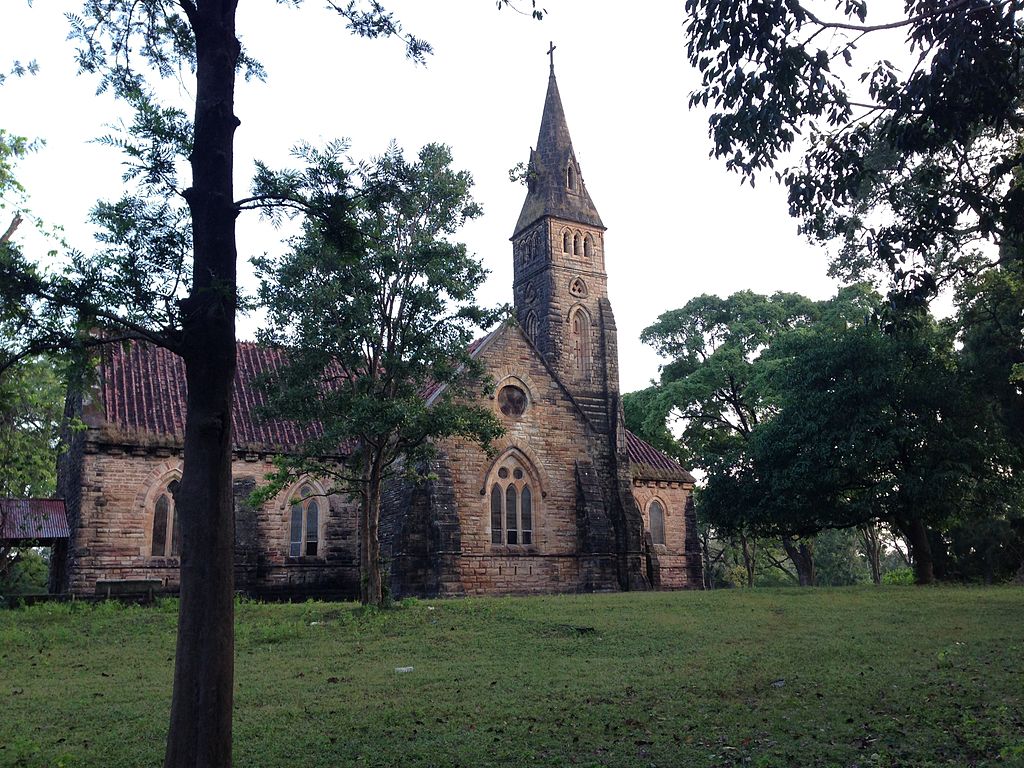
Built in 1875, in the Madhya Pradesh hill station, Pachmarhi, the Protestant Church is the most remarkable example of colonial architecture. The evident use of the Gothic style of architecture makes it worth including on your travel list to Bhopal. The ribbed dome, twelve stained glass panes, and exceptional ceiling make the red sandstone structure fascinating. The church opens for visitors only on Sunday.
Conclusion
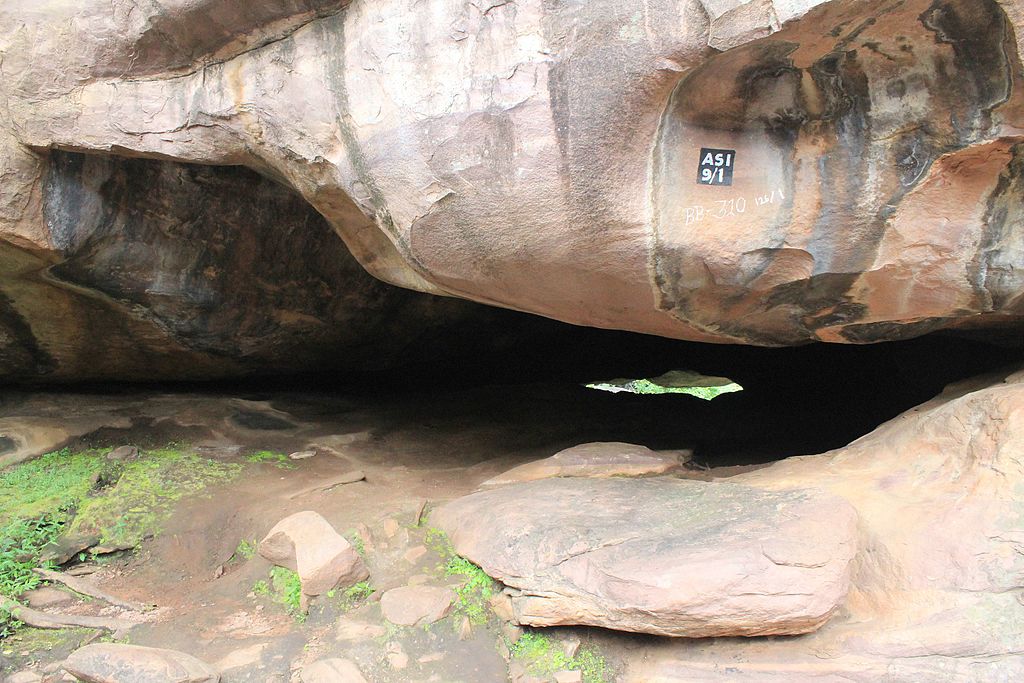
Other than the architectural marvels mentioned above, Madhya Pradesh is one of the most underrated repositories of architectural marvels. Here, we can find wonders dating back to the Palaeolithic period, for instance, the Bhimbetka Rock shelter, one of the oldest surviving historical buffs on Indian land. The list of monuments ranges from monuments built in the different periods, from ancient, to medieval, to colonial to contemporary. Architecture and monuments also represent various religions, Hindu, Muslim, Jainism, Buddhism, Sikhism, and Christianity. The architectural styles in Madhya Pradesh represent the whole history of the subcontinent as well as the diversity in the history of India.












































